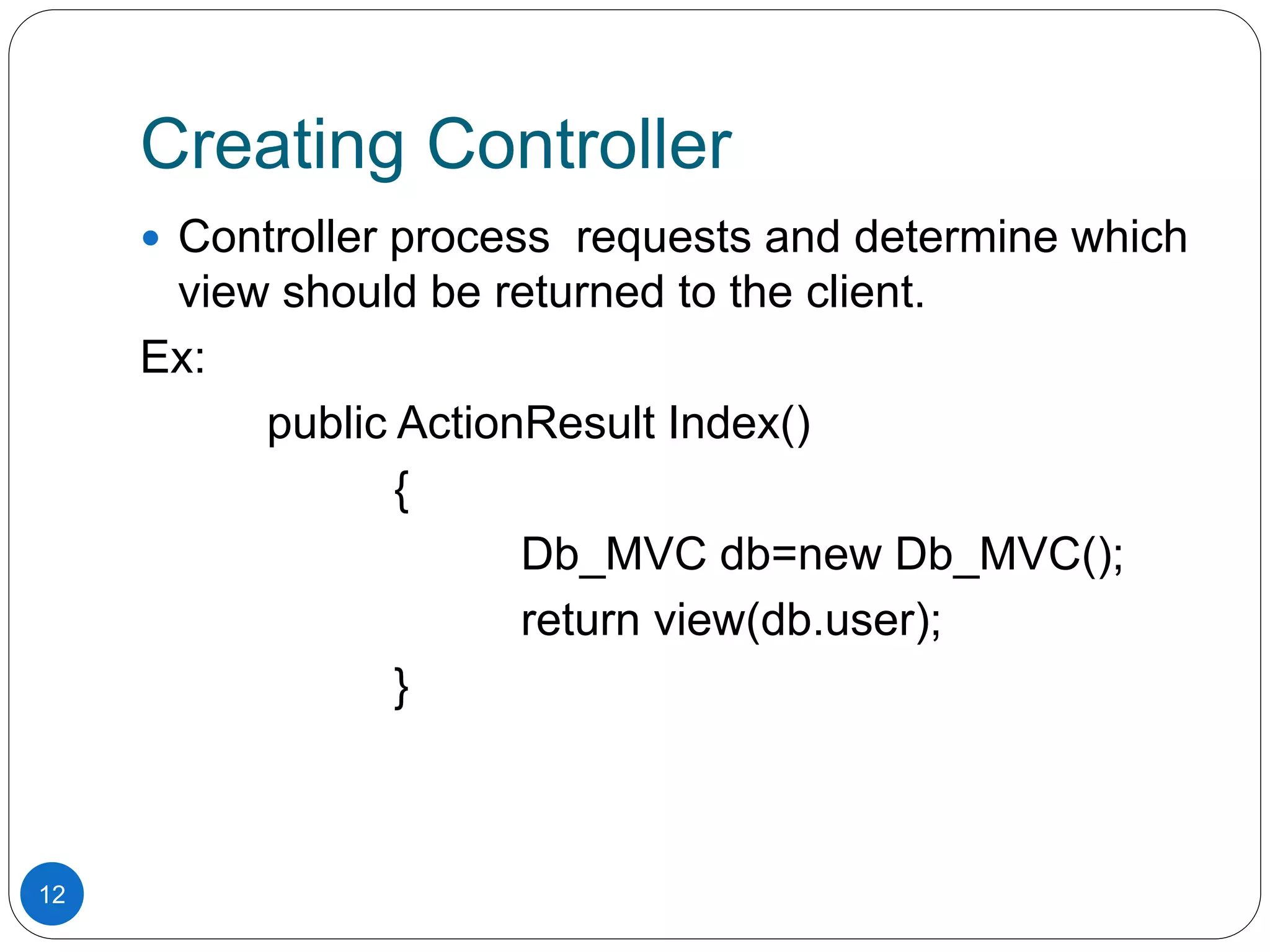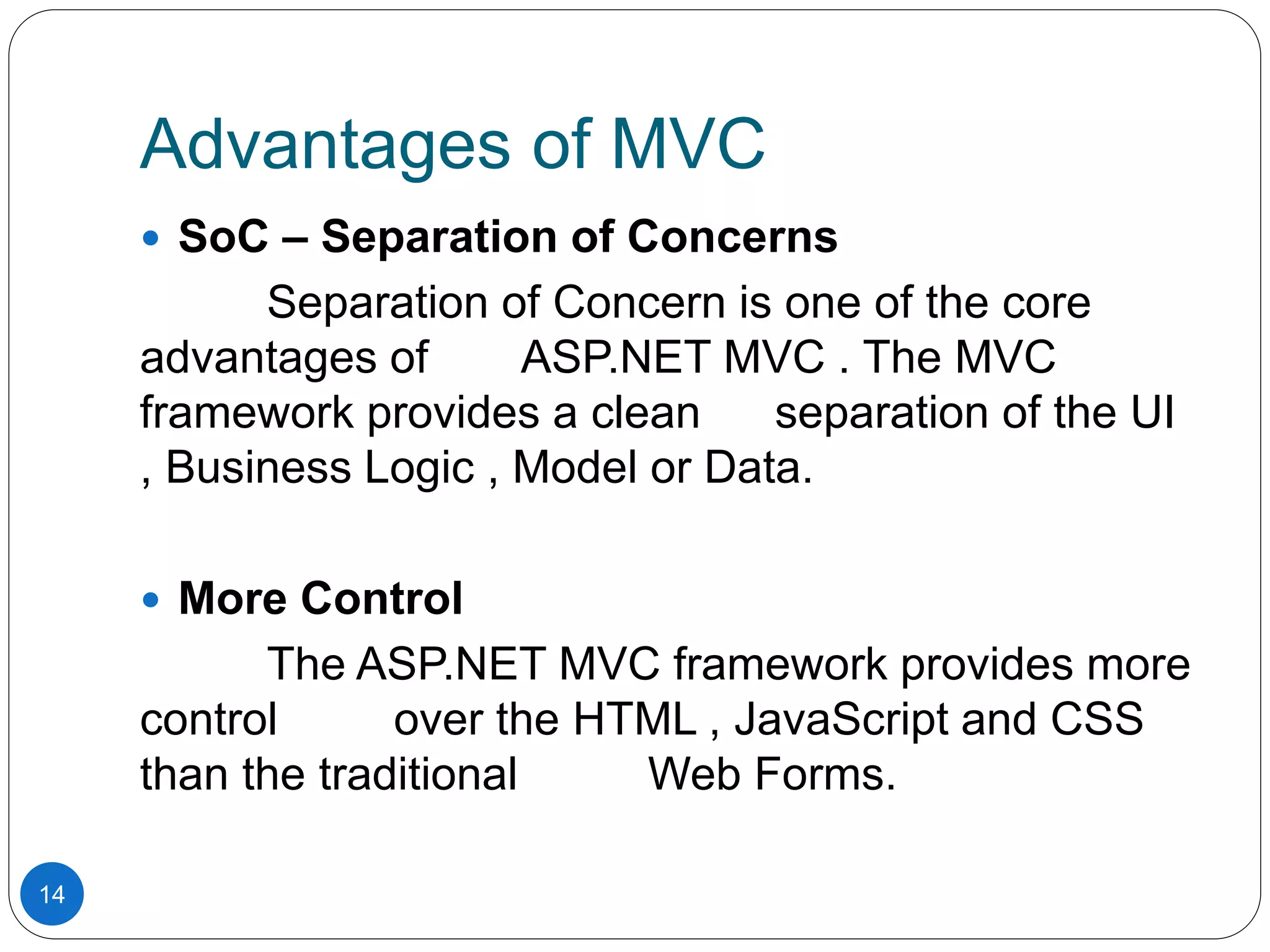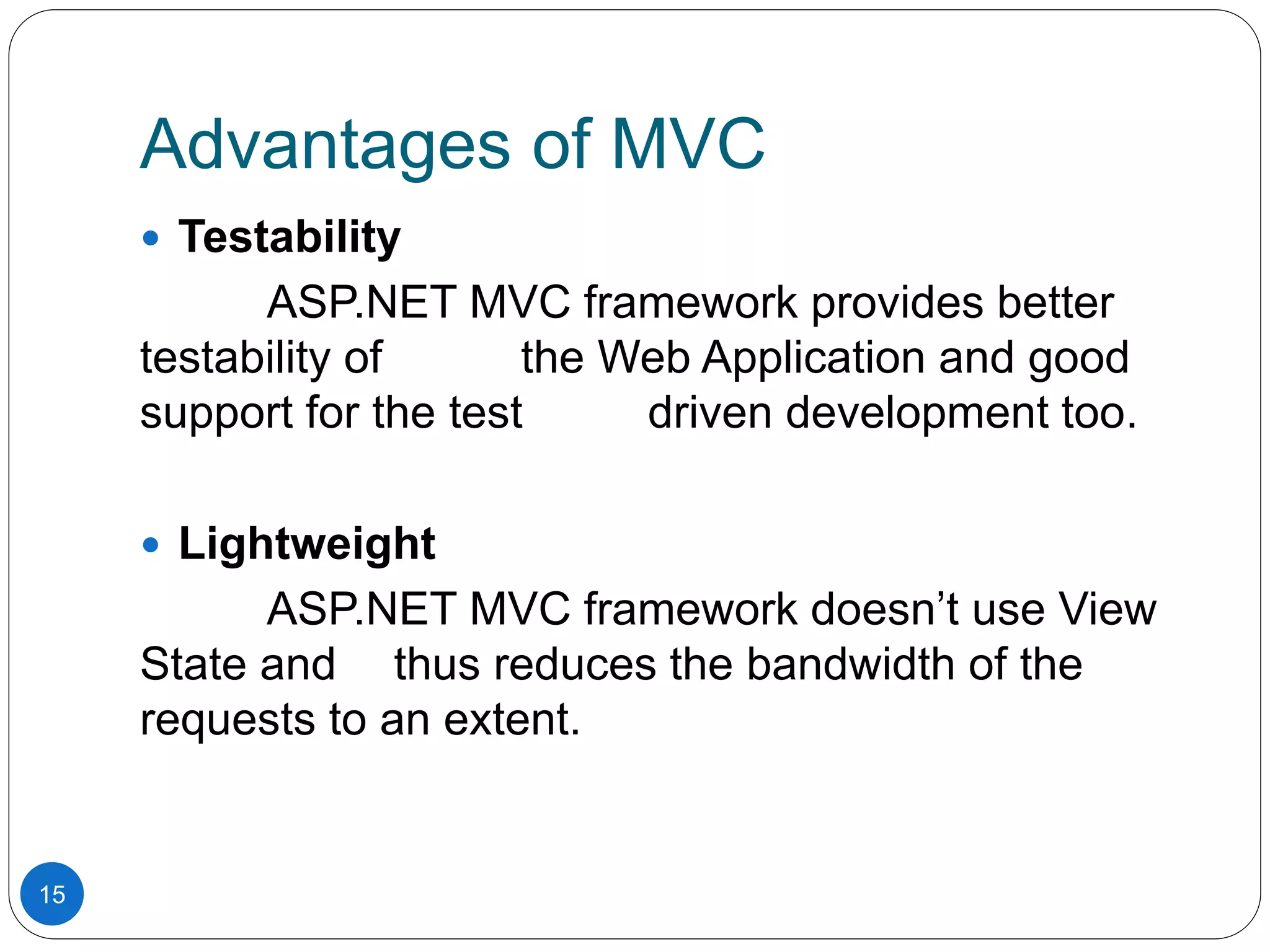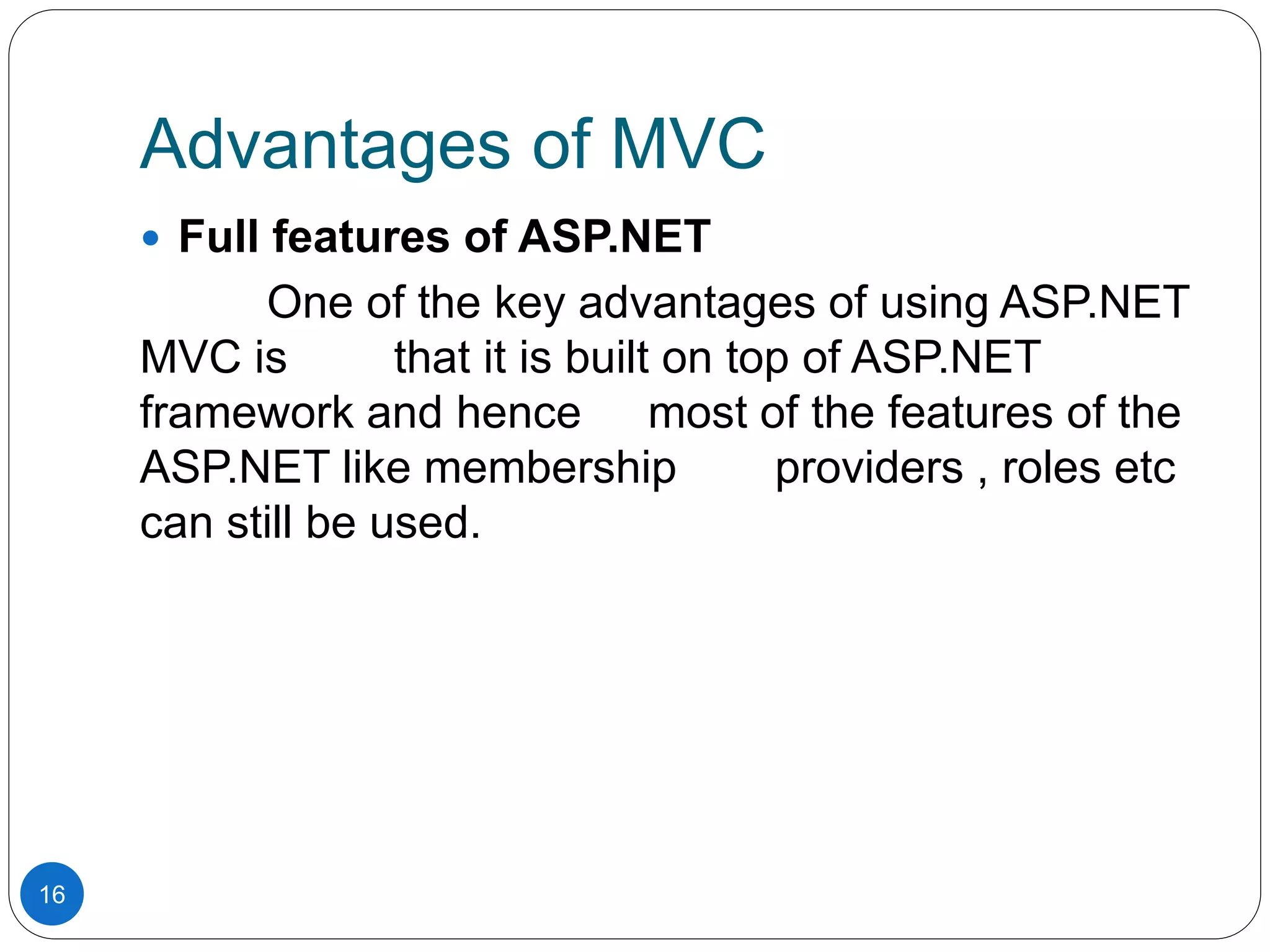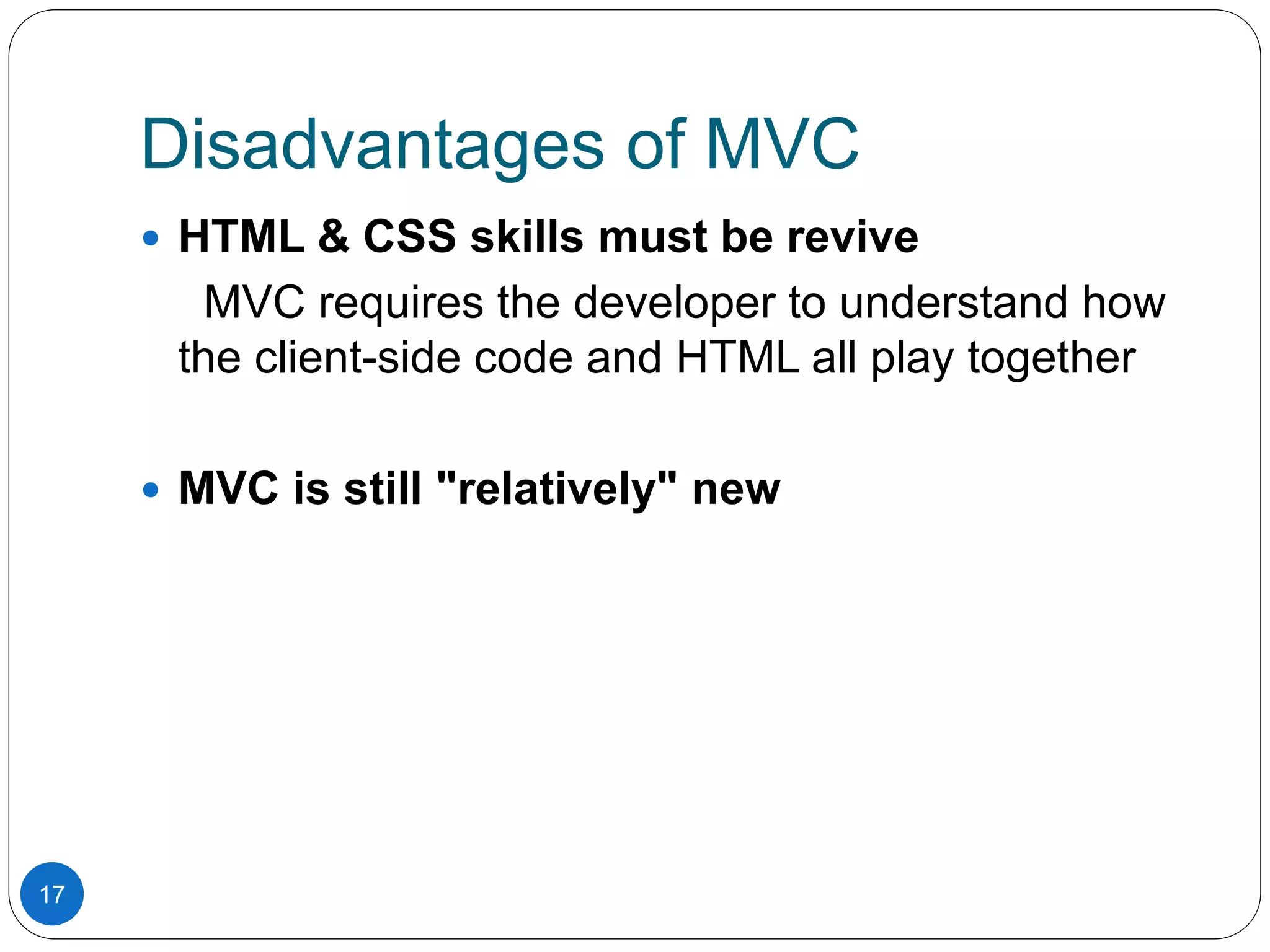The document presents an introduction to ASP.NET MVC, including the key components of MVC (Model, View, Controller), how MVC works, and how to create a model, controller, and view. It also discusses advantages like separation of concerns, control, and testability, and disadvantages like requiring HTML/CSS skills and MVC being relatively new.
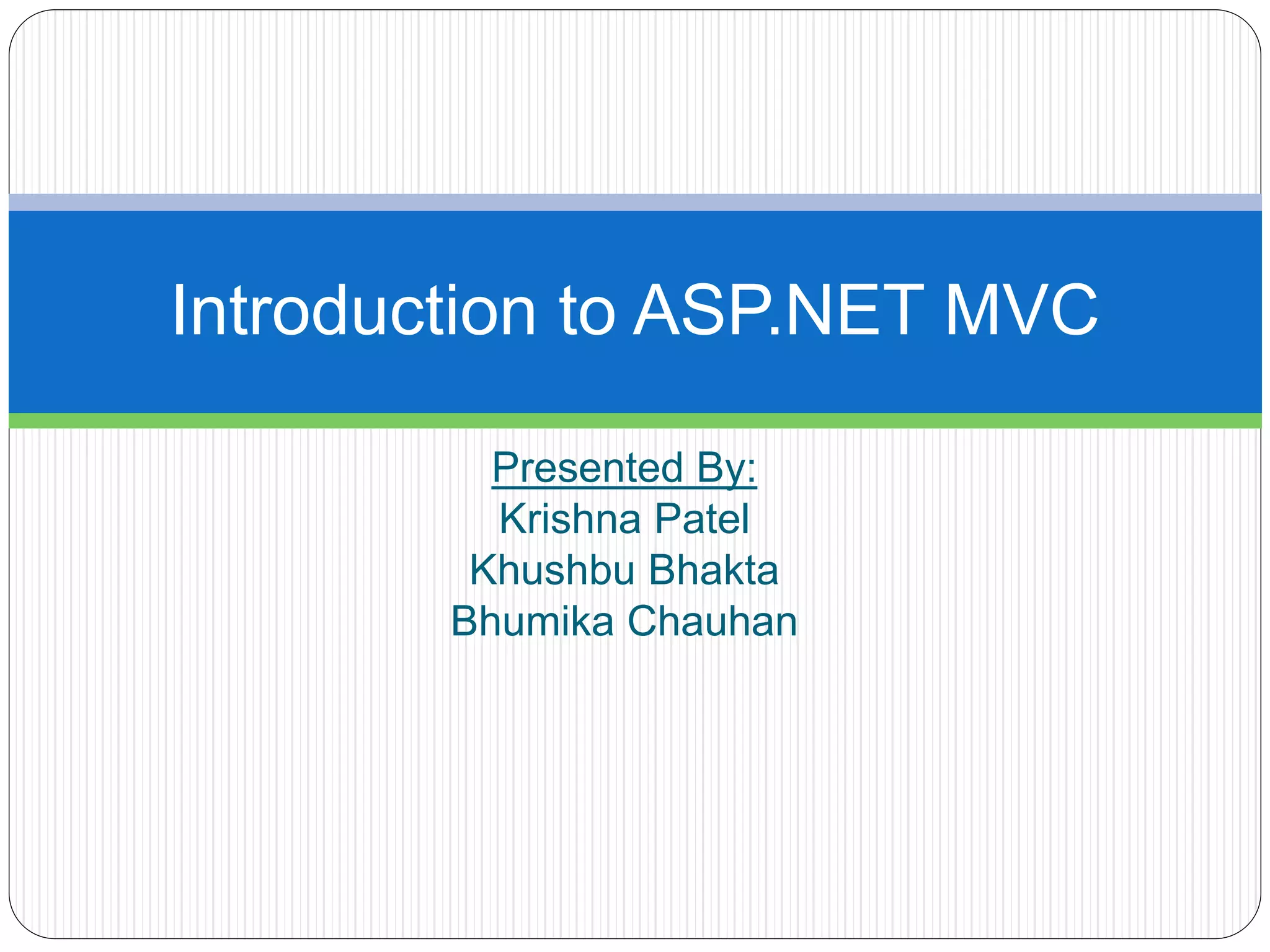
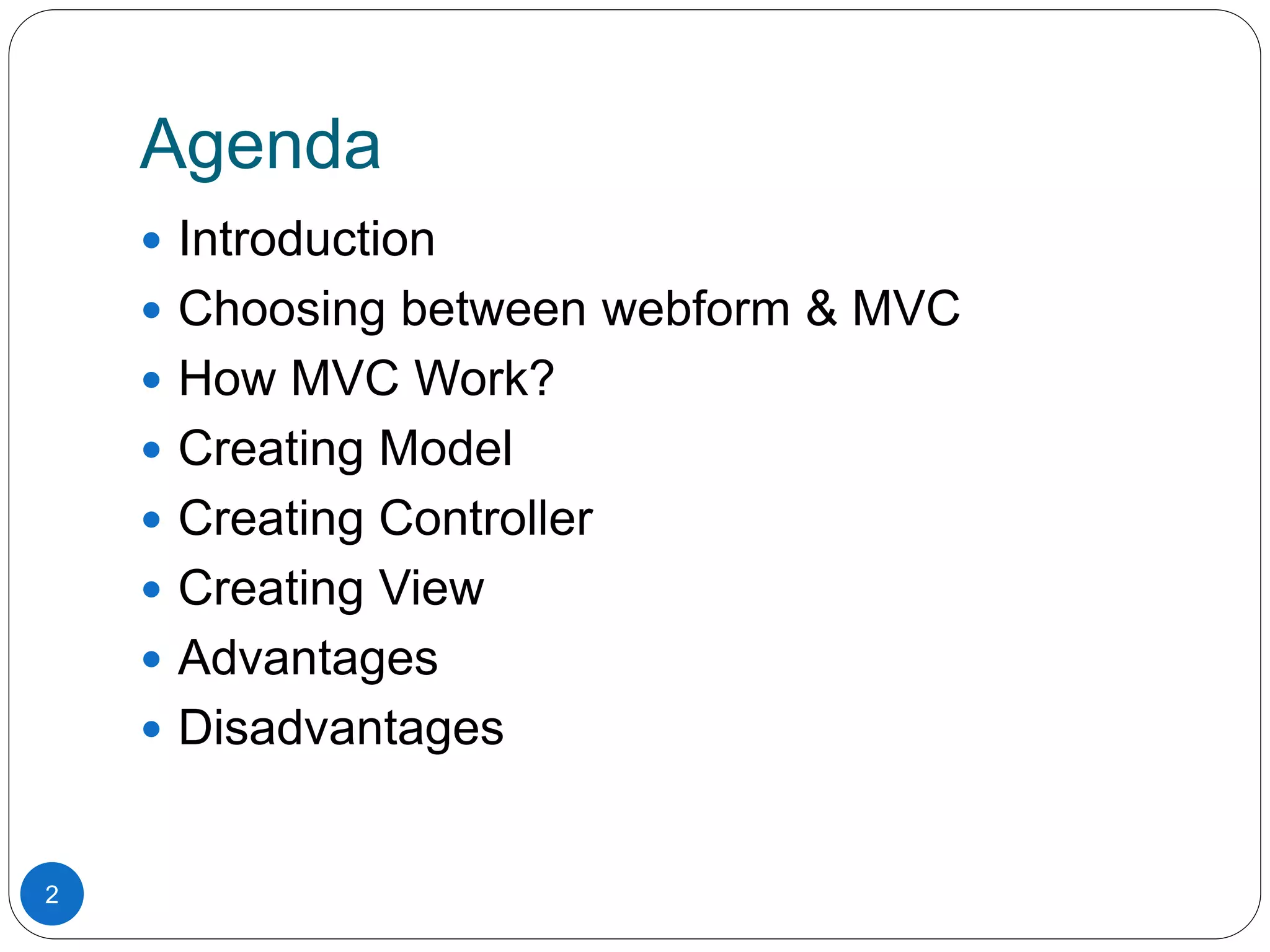
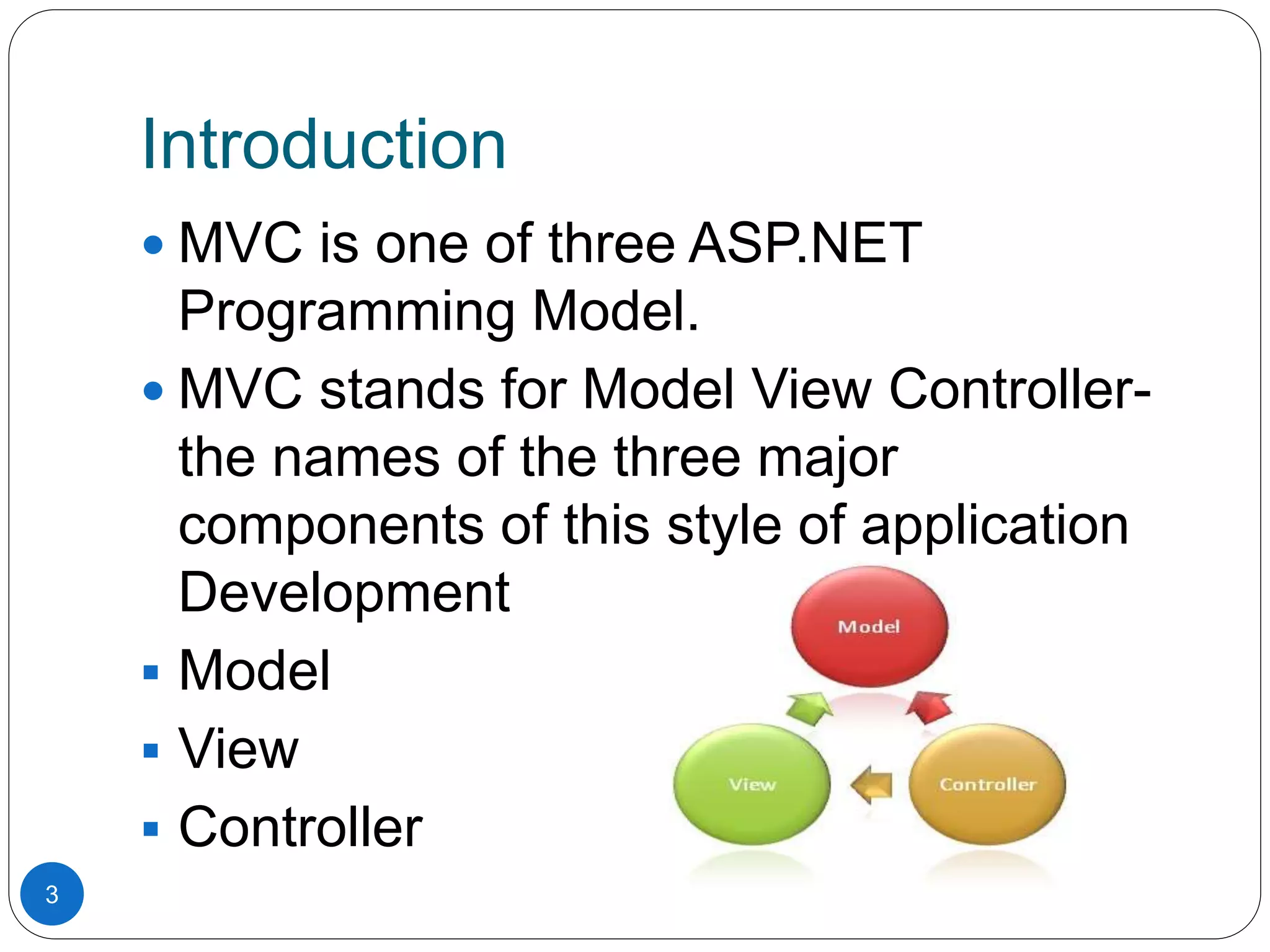
![Introduction Model refers to a data model,which is something that you can use to perform create ,read,update,delete(CRUD) operation on your application data. View is what is present to user.[Display Data] Controllers are code file that bridge between views and models.It read data from view,control user input and send input data to the model 4](https://image.slidesharecdn.com/introaspmvc-150408060422-conversion-gate01/75/Intro-ASP-MVC-4-2048.jpg)


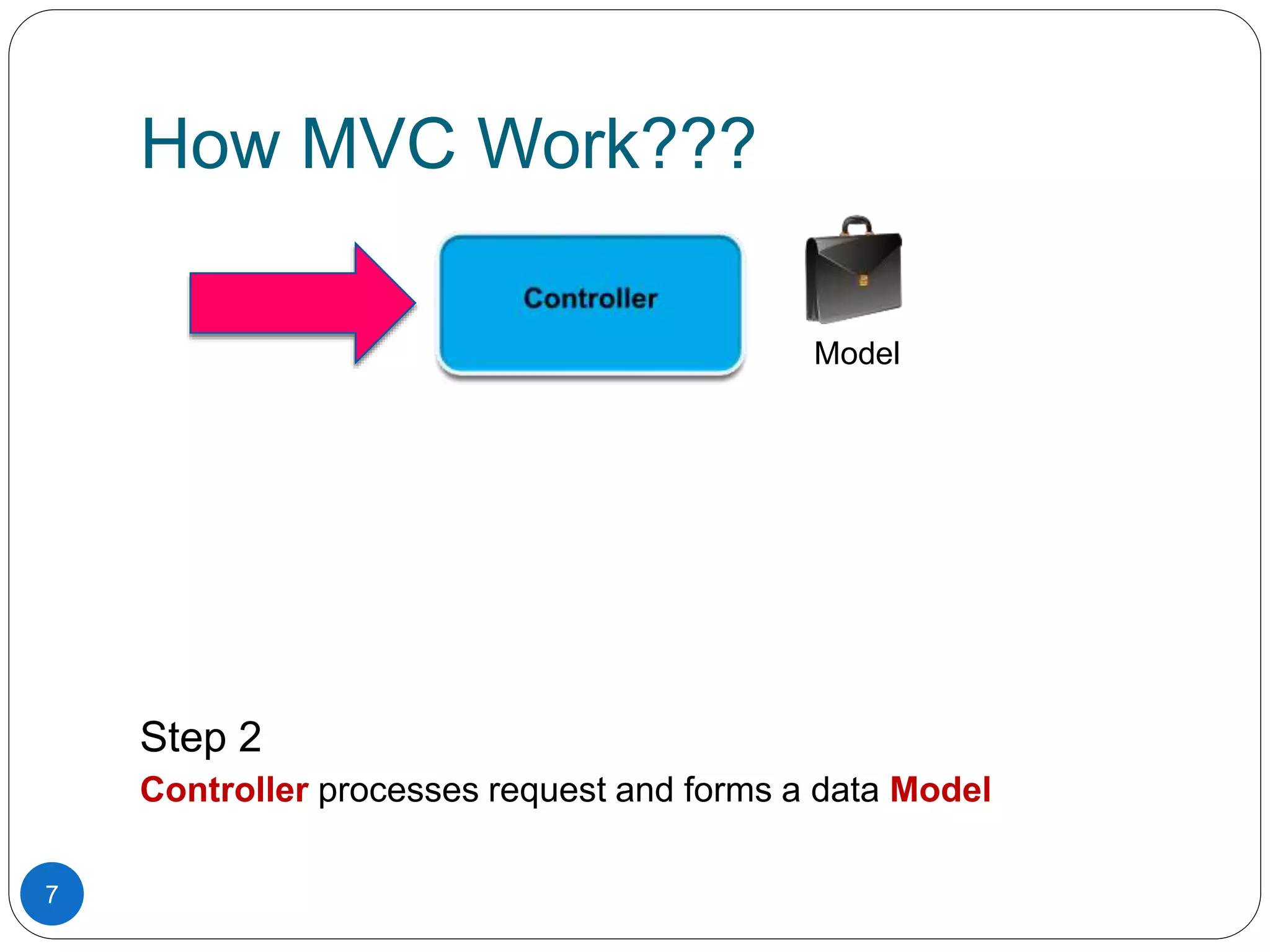
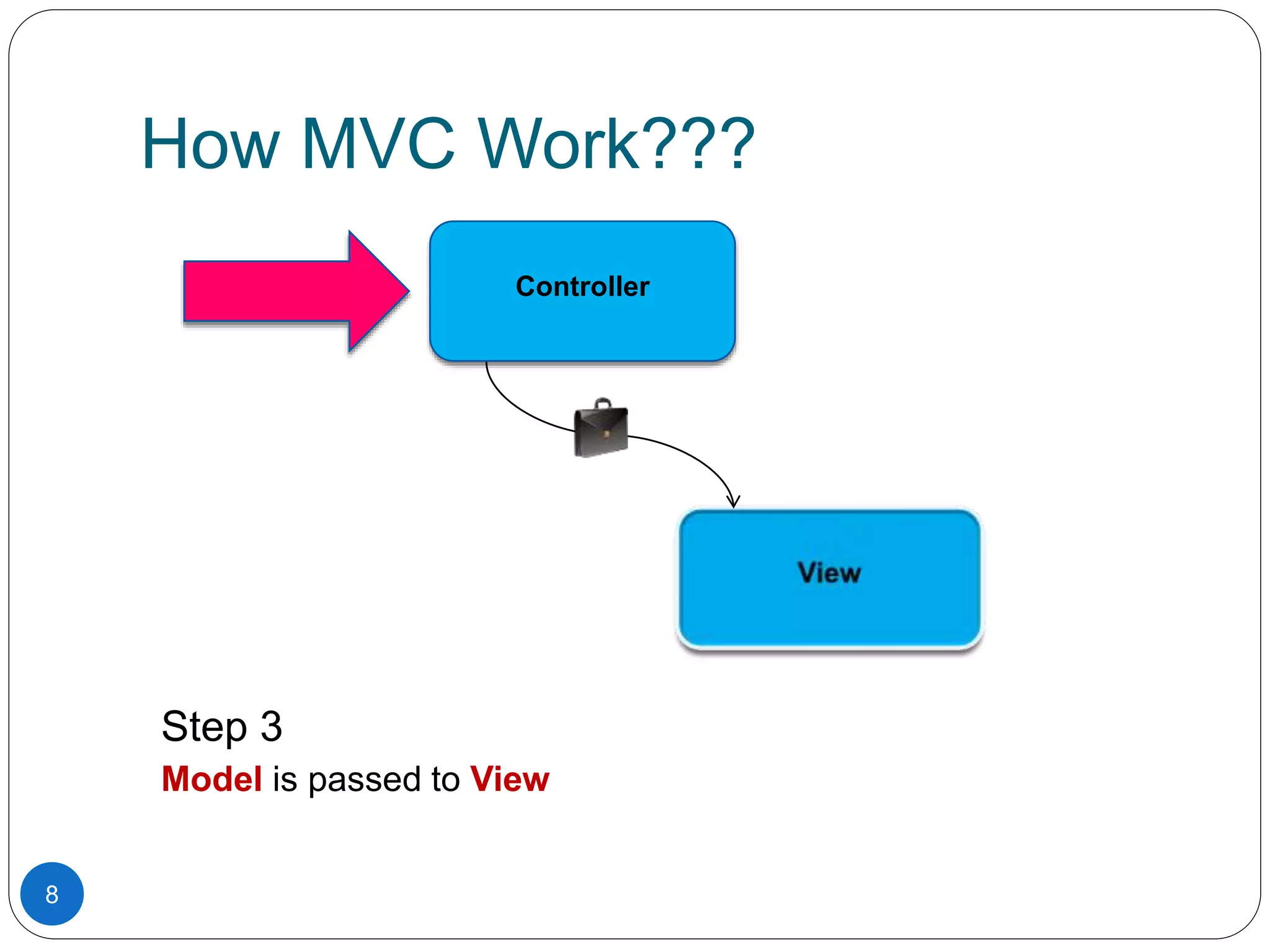

![How MVC Work??? Step 5 Response is rendered [deliver] Response Controller View 10](https://image.slidesharecdn.com/introaspmvc-150408060422-conversion-gate01/75/Intro-ASP-MVC-10-2048.jpg)

